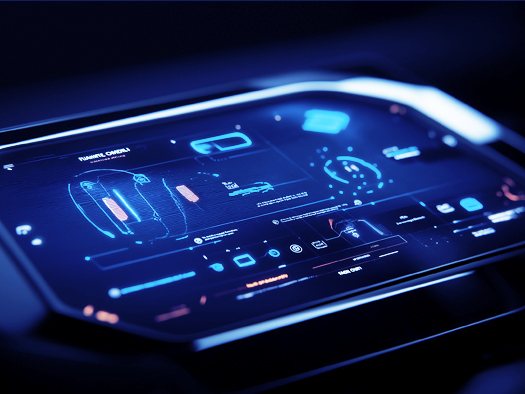Customer-centric product development: Why the automotive industry needs to take a “digital first“ approach
Published April 6, 2024
- Automotive
- CIO & CTO Advisory

Most Original Equipment Manufacturers (OEMs) today would likely claim to be responsive to their customers’ needs. However, customer centricity is still influenced by legacy analog mindsets and product strategies. For example, the configuration of new vehicles is still primarily based on hardware components. In production, customer-selected optional features may require, for example, the installation of additional, more powerful control units. Customization is still focused on physical features and material selection.
In addition, the customer journey is based on decades-old sales channels and principles. While customers expect to have digital options when purchasing a car, this expectation is often only partially met.. To maximize customer-centricity in their product development, automotive manufacturers must embrace a “digital first” approach.
Customer-centric product development requires digital product options
Software and technology offer a wide range of options for customizing cars as a product to maximize customer centricity. These options are primarily based on the fact that that the hardware requirements for a feature are already integrated into each delivered vehicle and can be activated and unlocked by the customer through software. Some examples include:
- Extension of assistance systems (such as an efficiency assistant, level 3 automation)
- Enhancement of digital lighting systems (e.g. by projecting symbols/auxiliary lines onto the road)
- Extension of features (e.g. tuning of suspension, activation, and the steering angle of a rear axle steering system)
- Customization of AVAS sounds (Acoustic Vehicle Alerting Systems) inside and outside of the vehicle
- Customization of digital cockpit displays, user interfaces, and interior features (such as digital light bands)
- Digital infotainment offerings (audio streaming, digital travel guide, etc.)
In addition, customer-centric product development involves the systematic digital transformation of the customer journey. This covers the entire lifecycle of the vehicle, for example:
- Digital ordering and customer support through various channels (omnichannel)
- Extended functionality and cross-device use of configurators
- Digital status updates from vehicle production to pickup
- Close integrations between smartphone apps and vehicle features
- Digital service management (notification and scheduling of inspections)
- Digital contact with the customer throughout the vehicle’s usage cycle
- “Upselling” of new digital features during the vehicle’s usage cycle
- Digitally supported additional offers such as short-term rental, sharing, etc.
Complex starting point
Customer expectations, shaped by their experiences with smartphones and digital entertainment services, are largely global. Nevertheless, different markets also have different customer wants and needs. Knowing these and taking them into account in your digital transformation strategy is an important prerequisite for customer-centric product development in the automotive industry.
At the same time, today’s cars are extremely complex and elaborate products, especially due to development history to date. The possible combinations of equipment and customization result in millions of variants.
However, OEMs are increasingly facing new competitors. On the one hand, this applies to young brands such as Tesla or Lucid that started their product development from a “green field” and have therefore been able to pursue new approaches in the area of digital services from the very beginning. On the other hand, this applies even more to new players such as Google or Apple that are approaching the automotive market with a strict software mindset.
How can legacy experience be transformed into a new mindset?
The advantages automotive manufacturers enjoy, resulting from decades of experience, are largely based on the requirements and prerequisites of the “old world” – production logistics and pricing of optional extras, platforms, and module strategies are all results of these earlier framework conditions. In contrast, they have hardly any experience with customization based on software products, ranging from production to pricing. The industry as a whole is accustomed to revenue primarily coming from vehicle sales and aftersales services, and to a rather small extent, aftersales retrofits.

The car of tomorrow is a digital product in the real world. Customer-centricity (instead of market-centricity) is what makes digital services successful.
Finally, manufacturers often lack the perspective required to develop adequate software-based solutions. In the future, to survive this situation, OEMs must quickly expand their competencies for digital and customer-centric product development in the automotive industry. This applies to product engineering and realization as well as to the definition of pricing. Automotive manufacturers must shift the mindset within their companies to customer-centricity. This also requires the courage to test new methods and integrate customer feedback directly into the organization. The objective: The car of tomorrow is a digital product in the real world. Customer-centricity (instead of market-centricity) makes digital services successful.
Customer-centric product development: the car of tomorrow is a digital product
The foundations for a digital customer journey with the objective of maximizing customer centricity are laid during product design. This includes the entire vehicle architecture – it’s hardware, for example, must be capable of supporting digital options and services over the entire lifecycle of a vehicle.
On top of that comes a strict dedication to the digital transformation of the customer journey, particularly with digital options from ordering to customer support through various channels (omnichannel). All of this requires, a transformation of the mindset in the organization. The clear vision here is that the car of tomorrow is a digital product in the real world. Focusing on customer-centricity is fundamental to achieving this goal.
Author
-

Stephan Blankenburg
Partner – Germany, Stuttgart
Wavestone
LinkedIn